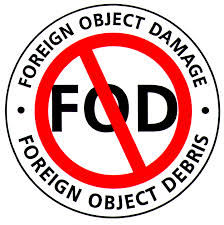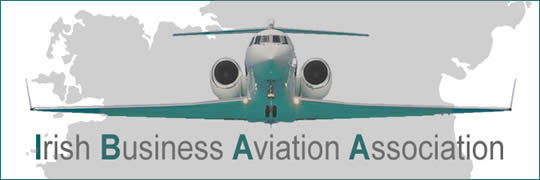FOD on your Ramp
Written for Globalair.com & published March 2016:
Who is responsible for FOD detection at your facility? Do they really pay attention to the usually brief training given to them? Why should FOD awareness go all the way to the top of your organization?
Well, let’s take the last question first. If there is an incident as a result of FOD on your ramp the investigation will go all the way to the post holders/managers/CEO. Any such incident will result in expense, probably considerable being aviation related, maybe even go to court. And then there’s the inevitable increase in insurance premium to be paid. And that pretty much answers the first question too, “Who is responsible for FOD detection”. The second question “do they really pay attention” has several answers. During safety training most, but not all, will listen and some will learn. Few will put their training into practice for an extended period of time, especially if they do not see ownership of the FOD problem at all levels of an organization.
Ask yourself this question, is the marshaller expected to be the only person to carry out FOD checks? No, every single person using the ramp should be eagle eyed to the danger! Even when FOD is included in training, people tend to become more relaxed about FOD awareness as time goes by. To keep the ever present danger of FOD to the forefront of every staff members mind there needs to be visible and continuous leadership from all levels of management. Some FBOs, MROs and airports do this via a variety of methods, safety posters (move around often so they get noticed), weekly FOD sweeps by all staff lead by senior manager, circulating FOD reports, provision of FOD bins, to name a few.
So what is FOD, Foreign Object Debris or Foreign Object Damage?
You can’t have Foreign Object Damage without Foreign Object Debris!
FOD is taken to mean the debris itself and the resulting damage is referred to as FOD Damage.
FOD is an acronym used in aviation to describe both the damage done to aircraft by foreign objects, and the foreign objects themselves.
Foreign Object Debris (FOD) is a substance, debris or article alien to an aircraft or system which would potentially cause damage. Foreign Object Damage is any damage attributed to a foreign object (i.e. any object that is not part of the aircraft) that can be expressed in physical or economic terms and may or may not degrade the product's required safety or performance characteristics.
Some common and not-so-common examples of FOD I have come across:
Engineers tools
Screws, Locking Wire, Electrical Wire, Tape, Aircraft Parts
GSE and GSE Parts
Clothing, Uniform Items
Shotgun Cartridge
Trash Bags, Catering
Loose pavement & tarmac (especially after severe WX)
Airborne debris including: Bubble Wrap, Bailing Wire and Plastic Wrapping
Live FOD including: Rabbits, Hares, Dogs, Snakes and even a Cow
What damage can these do to an aircraft? Well, an Air France Concorde crashed in July 2000 following a tyre striking a thin strip of metal from a preceding DC-10 aircraft leading to a tyre blow out with sections of that tyre puncturing a fuel tank leading to the loss of all 109 souls onboard and four on the ground. In March of this year an EasyJet flight returned to the gate after a passenger alerted cabin crew to a spanner on the wing. This tool could have dropped onto the runway or become wedged in the flaps or ailerons. An explosion which grounded the last remaining airworthy Vulcan Bomber just prior to take off destroying two of the aircraft’s engine was due to ingestion of silica gel desiccant bags into the one of the engines on the port side of the aircraft. Debris was then sucked into a second engine. The silica gel bags are used to reduce moisture and were apparently left inside the engine by mistake.
So, even small items in the wrong place can cause death, injury or serious damage. All FOD comes from somewher. People can take it directly onto the ramp, it can come in on the wind, blown from one area to another by jet blast or helicopter downwash, fall from an aircraft and can even be left there by aircrew. And then there is GSE left in the wrong place or not secured during high winds or the ever present menace, black chocks on black tarmac, in the rain, at night just waiting to trip up a marshaller or for an aircraft to taxi over them!
Let us not forget wandering aircraft. On shared ramps, if tying down aircraft in your charge in anticipation of high winds, do you check if the other FBOs plan to do the same? I witnessed on a ramp I work a few years back, a ramp agent securing aircraft ahead of an approaching storm. Running out of chocks he took a set from an impounded aircraft (not his FBOs responsibility), thereby leaving that aircraft free to wander the ramp once the storm got up, like a canon ball on the deck of one of the old sailing frigates! Needless to say myself and a colleague sources chocks for the aircraft elsewher.





